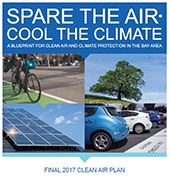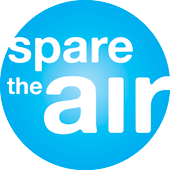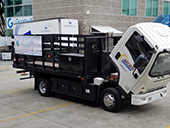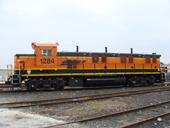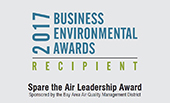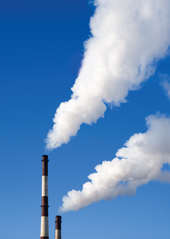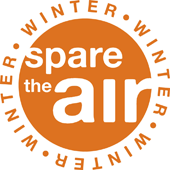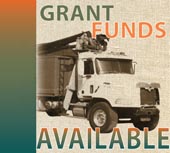|
|

|
|
|
|
May 2017 l Volume 2017-2
|
|
|
|
|
|
|
Welcome to the latest issue of the Bay Area Air District’s Air Currents newsletter. In this issue, you’ll find articles about the Air District’s bold new vision to “Spare the Air and Cool the Climate” with the recently adopted 2017 Clean Air Plan, about an electric delivery truck pilot program and about a series of recent workshops on key upcoming rules. Other articles cover the beginning of the summer Spare the Air season, the end of the Winter Spare the Air season and the announcement of Spare the Air Leadership award winners. A call for projects under the Goods Movement grant program and a summary of current grant opportunities is also included.
|
|
|
|
|
|
|
|
|
|
|
|
|
|
|
| | |
Air District Board Adopts 2017 Clean Air Plan: Spare the Air, Cool the Climate
|
|
On April 19, the Air District’s Board of Directors adopted a bold air quality and climate plan, the 2017 Clean Air Plan, entitled Spare the Air, Cool the Climate, which addresses air quality improvement and greenhouse gas, or GHG, reduction for the nine-county Bay Area region. Spare the Air, Cool the Climate (YouTube streaming video) is a blueprint for tackling regional air pollution and climate pollutants while improving the health of Bay Area residents for the next several decades. To support the plan, the Air District will dedicate $4.5 million to this effort over the next several years and will look to further leverage these funds to spearhead larger air quality improvement and climate protection efforts.
The 2017 Clean Air Plan aims to lead the region into a post-carbon economy, continue progress toward attaining all state and federal air quality standards, and eliminate health risk disparities from air pollution exposure in Bay Area communities. The plan includes 85 distinct control measures to help the region reduce air pollutants and has a long-term strategic vision which forecasts what a clean air and carbon-free Bay Area will look like in the year 2050.
Spare the Air, Cool the Climate envisions a future where, by the year 2050:
- Buildings will be energy efficient - heated, cooled and powered by renewable energy.
- Transportation will be a combination of electric vehicles, both shared and privately-owned, and autonomous public transit fleets, with a large share of trips by bicycling, walking and transit.
- The Bay Area will be powered by clean, renewable electricity and will be a leading incubator and producer of clean-energy technologies, leading the world in the carbon-efficiency of our products.
- Bay Area residents will have developed a low-carbon lifestyle by driving electric vehicles, living in zero net-energy homes, eating low-carbon foods and purchasing goods and services with low carbon content.
- Waste will be greatly reduced; waste products will be re-used or recycled and all organic waste will be composted and put to productive use.
What does the plan propose?
- decreasing fossil fuel combustion
- improving energy efficiency
- decreasing emissions of potent greenhouse gases
- reducing smog, particulate matter, air toxics and greenhouse gases
The plan’s control measures aggressively target air pollution and GHG emissions from local industrial facilities as well as the largest source of GHG, ozone pollutants and particulate matter emissions – transportation. Measures include more incentives for electric vehicle infrastructure, off-road electrification projects such as Caltrain and shore power at ports, and reducing emissions from trucks, school buses, marine vessels, locomotives and off-road equipment. The Air District will continue to work with regional and local governments to reduce vehicle miles traveled through the further funding of rideshare, bike and shuttle programs.
The Air District continues to fund clean air and climate protection programs, providing millions each year to help initiate change. Financial incentives from the Air District help fund innovative programs such as the Property Assessed Clean Energy or PACE program, and Marin Clean Energy, making clean energy more accessible for Bay Area residents. The Air District also helps cities and counties develop local climate protection plans.
|
|
|
|
|
|
|
|
|
|
|
|
|
|
| | |
Spare the Air Summer Season Begins
|
|
On May 1, the Air District is launching the 2017 Spare the Air season, which focuses on reducing smog-forming pollution and greenhouse gas emissions during the warmer summer months. The Spare the Air program encourages Bay Area residents to reduce air pollution and greenhouse gas emissions every day by rethinking their commute and avoiding driving alone. Changing commuting behavior will help reduce the amount of smog generated when temperatures are hotter. It will also help decrease the emissions of greenhouse gases that contribute to climate change.
Transportation is the largest source of smog pollution and greenhouse gases in the Bay Area and single-occupancy vehicles are the main contributors. The number-one thing Bay Area residents can do to improve air quality is to leave their car at home and take public transit, carpool, bike or walk to work.
Bay Area employees are encouraged to check with their human resources office to learn what commuter benefits are available to them through their employer. The Bay Area Commuter Benefits program requires all employers in the Air District’s jurisdiction with 50 or more full-time employees to offer commuter benefits to their workers.
During the summer months, Spare the Air Alerts are issued when ozone pollution is forecast to reach unhealthy levels. Ozone, or smog, can cause throat irritation, congestion and chest pain. It can trigger asthma, inflame the lining of the lungs and worsen bronchitis and emphysema. Ozone pollution is particularly harmful for young children, seniors and those with respiratory and heart conditions. When a Spare the Air Alert is issued, outdoor exercise should be limited to the early morning hours when ozone concentrations are lower.
Spare the Air Alerts can also help the Bay Area to reduce its emissions of greenhouse gases, putting the region on track to meet its ambitious climate protection goals.
To find out when a Spare the Air Alert is in effect, register for email AirAlerts at sparetheair.org, call 1(800) HELP-AIR, download the Spare the Air App or connect with Spare the Air on Facebook or Twitter.






|
|
|
|
|
|
|
|
|
|
|
|
|
|
| | |
Air District Funds Fleet of Electric Delivery Trucks
|
|
In March, the Air District partnered with the California Air Resources Board, SF Goodwill, the Center for Transportation and the Environment, and BYD Corp. to announce the kickoff of a first of its kind project to test the viability of deploying a fleet of electric delivery trucks in the region. Under this project, 11 electric trucks will serve Goodwill locations in three counties: San Mateo, San Francisco and Marin. The project’s goals include providing a model to electrify Goodwill’s national truck fleet, increasing market adoption for electric trucks in general, and reducing greenhouse gases and air pollution locally.
This $4.4 million project is funded through the State of California’s climate change-fighting cap-and-trade program, and includes matching funds from the Air District and an in-kind match from SF Goodwill. The project is part of California Climate Investments, a statewide program that puts billions of cap-and-trade dollars to work reducing greenhouse gas emissions, particularly in disadvantaged communities.
Electric delivery trucks offer numerous environmental and operational benefits over conventional diesel vehicles. The cost to charge an electric vehicle is a fraction of the cost of filling up with diesel fuel. Maintenance is 50 percent less. And an electric truck also has no tailpipe emissions, which provides immediate health benefits both for residents in neighborhoods where the trucks operate, and for the drivers who use them on a daily basis.
|
|
|
|
|
|
|
|
|
|
|
|
|
|
| | |
Air District Launches Call for Projects to Reduce Air Pollution from Freight Movement
|
|
In March, the Air District announced the availability of over $20 million to fund replacement of older diesel equipment and new fueling infrastructure projects related to the commercial movement of goods. Diesel-fueled trucks are a major source of toxic pollution in the Bay Area, accounting for approximately 70 percent of the overall cancer risk from air pollution. Since heavy-duty diesel engines can last for many decades, the program is intended to quickly reduce diesel air pollution emissions and health risks from freight movement along trade corridors in the Bay Area.
Funding comes from the State of California Proposition 1B Goods Movement Emission Reduction Program funds, which the Air District administers locally.
Eligible equipment includes:
- Heavy-duty diesel-fueled trucks
- Freight locomotives
- Cargo-handling equipment such as forklifts, yard trucks and rubber-tired gantry cranes
- Transportation refrigeration units, insulated cold-storage trailers at grocery retail stores
- Berth electrification and emissions capture and control equipment at ports
The Goods Movement Program also funds a variety of hydrogen fueling, battery-charging and electric plug-in project options to assist owners of freight movement equipment to incorporate zero- or near-zero-emissions equipment into their fleets.
Since 2008, the Air District’s Goods Movement Program has awarded more than $61 million dollars for over 2,800 heavy-duty truck projects, and an additional $17.8 million dollars for marine berth electrification projects – in the process reducing more than 8,597 tons of particulate matter and oxides of nitrogen emissions.
Applications are due by June 30 for most project categories (locomotive project applications are due by May 31), and are available on the Air District’s website at: www.baaqmd.gov/goods.
|
|
|
|
|
|
|
|
|
|
|
|
|
|
| | |
New Spare the Air Leadership Award to be Presented to Two Local Winners
|
|
In partnership with the 2017 Acterra Business Environmental Awards, the Air District is announcing the newest recipients of the Spare the Air Leadership Award. The Spare the Air Leadership Award recognizes leading Bay Area organizations that are taking action to improve the environment and air quality. The 2017 winners are Veritable Vegetable and the Sonoma County Water Agency.
Both Bay Area organizations have demonstrated significant leadership in reducing air pollutants, greenhouse gases, and developing innovative approaches to cleaner air.
Veritable Vegetable is a forty-year-old business based in San Francisco that purchases, transports, and supplies organic fruits and vegetables. The company has readily adopted the newest and most efficient technologies to reduce emissions from the trucks in its Green Fleet and firmly believes in running their business based on values rather than the bottom line. By successfully targeting reductions of greenhouse gases, criteria pollutants and toxic air contaminants, Veritable Vegetable accomplishes the goals of the Spare the Air Leadership Award.
The Sonoma County Water Agency produces, treats and distributes water to more than 600,000 Sonoma and Marin County residents through its Carbon Free Water Program. The Water Agency has developed a diverse renewable energy portfolio, including a floating solar photovoltaic system, and implemented a range of efficiency measures to deliver water without a carbon footprint. As of 2015, they reduced their overall greenhouse gas emissions related to electricity use by 99 percent, from 21,870 to 322 metric tons of CO2 equivalent, and achieved their goal of carbon-free water. By implementing innovative efficiency measures and achieving a vast reduction of emissions, Sonoma County Water Agency earned the Spare the Air Leadership Award.
The Acterra Business Environmental Awards is one of the San Francisco Bay Area’s oldest and most prestigious environmental recognition programs. Initiated in 1990, it is considered a champion among award programs due to its broad geographic scope, rigorous judging process and competitive pool of applicants.
These awardees will be honored at the 2017 Ceremony and Reception on May 24 from 6-9 PM at Intuit in Mountain View.
|
|
|
|
|
|
|
|
|
|
|
|
|
| | |
Air District Hosts Workshops on Key Upcoming Draft Rules
|
|
In March, the Air District invited Bay Area residents to attend four workshops to learn about three draft regulations that are intended to cap or reduce emissions of greenhouse gases and other air pollutants in the Bay Area. The regulations are:
- Regulation 11, Rule 18, which aims to reduce potential health risks from toxic air emissions at hundreds of existing Bay Area facilities.
- Regulation 12, Rule 16, proposed by a coalition of advocacy organizations, which would place a numeric cap on greenhouse gas and other emissions from refineries.
- Regulation 13, Rule 1, which is the first in a series of regional rules that address greenhouse gases and related pollutants. It would cap the carbon intensity per barrel of crude oil refined at each Bay Area refinery.
The workshops were held March 27-30 in the cities of Cupertino, Benicia, Hayward, and Richmond.
At the workshops, presentations and interactive displays allowed visitors to review materials in multiple formats, ask questions, and provide comments to inform the rule-making process.
The draft rule language for each rule is posted on the Regulatory Workshops page of the Air District’s website.
|
|
|
|
|
|
|
|
|
|
|
|
|
|
| | |
Winter Spare the Air Season Comes to a Close
|
|
The 2016-2017 Winter Spare the Air season ended on February 28, with seven Winter Spare the Air Alerts issued and no exceedances logged of the federal health standard for fine particulates. The season began on November 1, 2016. Air quality in the Bay Area this winter benefited from abundant storm systems that brought consistently heavy rains and wind, helping disperse air pollution within the nine-county region.
This season, the Air District received a total of 1,542 wood smoke complaints from Bay Area residents. To date, 91 violations were issued to residents observed to be in violation of the Wood Burning Rule.
Santa Clara was the county with the highest number of complaints, 434, followed by Alameda with 277 and Marin with 231.
Wood smoke from the 1.4 million fireplaces and wood stoves in the region is the largest source of wintertime air pollution in the Bay Area, containing harmful pollutants such as particulate matter and carbon monoxide. Exposure to wood smoke has been linked to serious respiratory illnesses and even increased risk of heart attacks.
The Air District’s Wood Burning Rule still requires, on a year-round basis, that residents who burn wood in a fireplace or outdoor fire pit burn cleanly - using dry, seasoned firewood - and not burn garbage, leaves or other materials that would cause excessive smoke. Residents who exceed the visible smoke provision of the Wood Burning Rule will still be subject to a ticket, even outside the November–February Winter Spare the Air season.
|
|
|
|
|
|
|
|
|
|
|
|
|
|
| | |
Air District Offers Millions in Grants
|
|
Carl Moyer Program - Funding is available for the upgrade or replacement of diesel engines and equipment, including trucks, off-road equipment, marine engines, locomotives and agricultural equipment. Applications are being accepted on a first-come, first-served basis until all funds are awarded. www.baaqmd.gov/Moyer Lower-Emission School Bus Program - Funding is available for compressed natural gas school bus tank replacements. Funding for bus replacements and diesel particulate filter retrofits will be available later this year. www.baaqmd.gov/LESBP
Goods Movement Program - Funding is available for the upgrade or replacement of the following types of freight movement equipment: diesel trucks/engines, transportation refrigeration units, cargo-handling equipment, and locomotives. Applications must be received by June 30, 2017. www.baaqmd.gov/goods
Charge! Program - Up to $5 million in funding is available to projects that will deploy new, qualifying electric vehicle charging stations at transportation corridors, workplaces, multi-family-unit dwellings, park and rides, and key destinations. Applications are being accepted on a first-come, first-served basis until July 28, unless funding is exhausted sooner. www.baaqmd.gov/charge
Bikeways Grant Program – Up to $5 million in funding is available on a competitive basis to public agencies that construct new bikeways and install secure bicycle parking to enable residents and commuters to mode shift to cycling and walking as alternatives to driving for short and first- and last-mile trips. www.baaqmd.gov/bikeways
Coming soon! - Light- and Heavy-Duty Zero-Emissions Vehicles – This program is scheduled to open later this year and will offer funding to both public and non-public entities who purchase qualifying new zero-emissions heavy-duty trucks and buses and three or more qualifying new zero-emissions light-duty cars and trucks. www.baaqmd.gov/HDZEV
|
|
|
|
|
|
|
|
|
|
|


